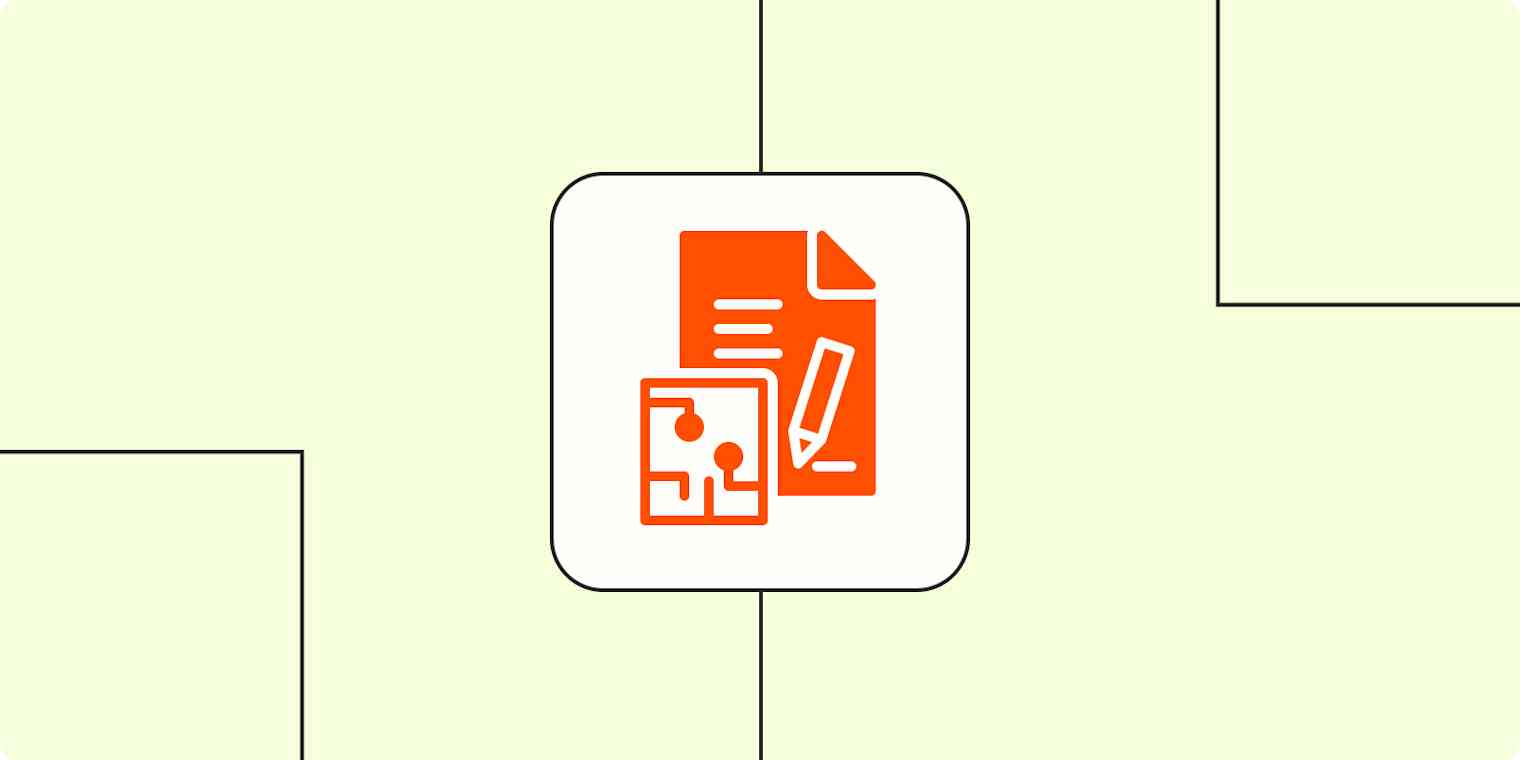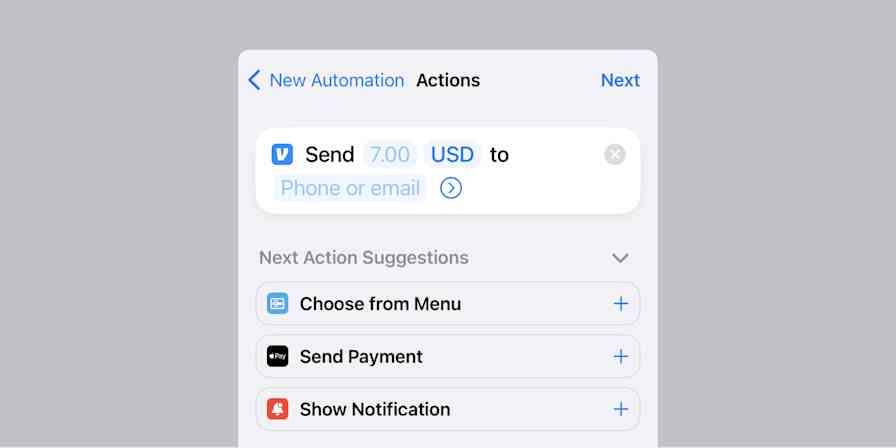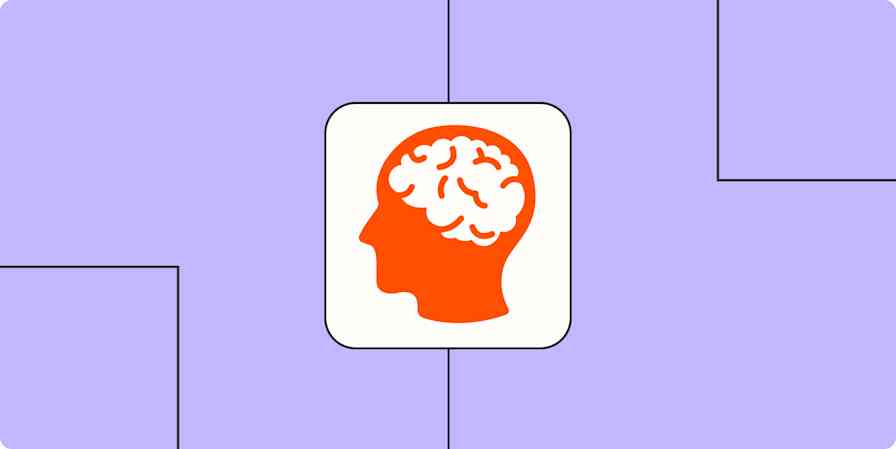A former editor of mine once described wordy article introductions as "throat-clearing," as in, this person doesn't know yet what they're trying to say, so they're hemming and hawing before getting to the point.
You could chalk it up to writers liking to explain things or the need to dramatically set up the scene, but when it comes to everyday non-fiction writing—especially on the web—it's usually better to get to the hook as quickly as possible. The clock is ticking.
(Already I've spent too much time on this intro.)
If you want to polish your prose—whether you're writing a blog post, an email, or a report for your team—the next time you get to typing, consult this checklist of common writing mistakes. It'll help you communicate more clearly and put the focus on what you're saying rather than on stray commas or needless words.
Thanks to the editors, writers, and readers who chimed in with their advice for this post, which no doubt has several errors in it. Let's just consider them Easter eggs.
Table of contents
The most common major writing mistakes
When approaching a piece of writing, most editors first check for the big picture to do "macro edits." Here, we're dealing with the content of the story—how it flows, if it all makes sense, if the tone is appropriate, and if there are any questions we didn't answer that readers might have. I like to call this "defensive editing," much like defensive driving.
After that, we can get into "micro editing" for the nitty gritty of editing for mechanics and language issues (see the next section if you, too, nerd out on words).
1. The intro is unnecessarily long
Get to the point. The example above isn't as bad as my initial attempt at the lede (the first couple of paragraphs that introduce an article), but, at 152 words, it's long by most web content standards.
To remember the urgent need to get to the point, keep in mind this excerpt from former Guardian editor Tim Radford's advice for journalists (emphasis added):
1. When you sit down to write, there is only one important person in your life. This is someone you will never meet, called a reader.
2. You are not writing to impress the scientist you have just interviewed, nor the professor who got you through your degree, nor the editor who foolishly turned you down, or the rather dishy person you just met at a party and told you were a writer. Or even your mother. You are writing to impress someone hanging from a strap in the tube between Parson’s Green and Putney, who will stop reading in a fifth of a second, given a chance.
The lede is one of the most challenging parts of writing an article, report, blog post, or even an email or memo—and also one of the most important. Advice from all the writers and editors I talked to? Just write the thing and then after the piece is done, rewrite it as much as needed, which might be several times.
[Re: Writing the lede first or last:] I usually write it first, then delete it, then write it last, then delete it, then delete everything, then drink some tea and contemplate my life choices, then I write something else entirely, and then I write it first again. So... first, then rewrite later.
— Joe Yaker (@joeyaker) March 12, 2018
Questions to ask as you're writing or editing the lede: Does the lede make sense—explain briefly what's to come? Is it supported by the rest of the document? Does it quickly hook the reader to continue reading? Bonus if you write for the web: Does the lede have the keywords you're targeting for SEO?
2. Explanations are handwavy or lacking backup
That same editor who introduced me to "throat-clearing" ledes also taught me the word "handwavy," similar to how magicians wave their hands to draw attention away from the actions behind the magic trick. It's not that we're trying to fool the reader when we're handwavy; it's that we haven't provided the reader all the facts or steps they need to understand what we're trying to explain.
So, for example, if I'm writing an article for the general public about transferring files between computers over the internet, I should explain what SFTP is when first mentioning it, since most people might not know that SFTP stands for Secure File Transfer Protocol and that it's a way to transfer and manage files between computers over a secure connection. In the same vein, here at Zapier, we try not to assume the reader knows what Zapier is when they first come to our blog or what "Zaps" (our word for automated workflows) are.
Pro tip: Just avoid jargon, unless you're going to explain that jargon. No one wants to feel like an outsider. Try the Hemingway app to test writing for readability.
Similarly, you need details to prove your point. If I state that exercise helps prevent colds, I'd best link those statements to research proving that point or to experts, such as doctors, who would back up that claim.
It's about being clear to your readers and also making sure your content doesn't have any "holes," so you can establish trust. As Radford writes: "If in doubt, assume the reader knows nothing. However, never make the mistake of assuming that the reader is stupid. The classic error in journalism is to overestimate what the reader knows and underestimate the reader's intelligence."
Questions to ask as you're writing or editing: Are terms most people don't commonly use explained or linked to definitions? Are claims all linked to relevant research or backed by authoritative sources? If you were the target audience for this content, would it make sense to you?
3. The content was written in passive voice
Passive voice is used too often by writers. Writers use passive voice too often. Active voice, as in the previous sentence, is more direct and stronger because the subject (writers) is doing something (using passive voice), rather than the subject taking a backseat.
Alan Henry, Special Projects Editor at WIRED, said:
By far, the most common thing I wind up editing out or changing is passive voice. It's fairly simple to identify once you understand it, but it can be deceptively difficult to many writers to pick out of their own work, even if they go back and review their writing when they're finished. If the subject isn't clear, undefined, or you're using verb tenses that struggle to describe the action taken by a person or party not named in the sentence, you're probably using passive voice.
In the same vein, I find many writers rely too heavily on present participles (-ing words, for example) when the simple present version will work better, and engage a reader more directly. For example, "Bill was setting the table" is fine, but "Bill set the table" is more direct, active, and engaging, which is critical to make sure your reader sticks with you, your story, or your article all the way through—and derives value from what they just read for their own use!
Whitson Gordon, Senior Manager of Marketing Content (Gaming) at ASUS, added:
Passive voice isn't always the worst thing in the world, but when it makes a sentence incredibly wordy, you're doing a disservice to your readers. If you catch yourself saying "One of the reasons for this is," or something similar, you should probably rethink what the subject of that sentence is.
That said, sometimes using passive voice does make more sense than the active voice. When the action is more important than who's doing the action, passive voice is totally acceptable. For example: "My computer was stolen yesterday" is more fitting than "Someone stole my computer yesterday," since it puts more emphasis on the event versus an unknown perpetrator.
Here are some examples of when the passive voice is the right option. Rewriting these sentences in active voice would make them decidedly awkward.
Passive: Sergeant Smith was wounded in Vietnam.
Active: Someone wounded Sergeant Smith in Vietnam.
Passive: Joey was hurt during the soccer game.
Active: The soccer game hurt Joey.
Passive: I've been bamboozled!
Active: Someone bamboozled me!
Questions to ask as you're writing or editing: Is the sentence natural and clear? Will active or passive voice make the sentence more direct and engaging? Try to rewrite with as few "to be" verbs as possible and default to active verbs and tangible nouns.
4. Too many words
If you're familiar with the Zapier blog, you've probably noticed that our articles are sometimes more like novellas than blog posts. While we're fans of long-form content, we try not to be wordy.
It's similar to the long lede issue: Wordiness within the body of the piece is beating around the bush. From Strunk and White's seminal guide The Elements of Style:
Omit needless words. Vigorous writing is concise. A sentence should contain no unnecessary words, a paragraph no unnecessary sentences, for the same reason that a drawing should have no unnecessary lines and a machine no unnecessary parts. This requires not that the writer make all his sentences short, or that he avoid all detail and treat his subjects only in outline, but that every word tell.
Common culprits? Overused adverbs and adjectives, such as "very" or "actually" or "quite." Emily Triplett Lentz, Senior Manager of Content Marketing at Calendly, said:
Your writing will be more concise and persuasive when you lose the overused adverbs and adjectives that ultimately detract from the meaning you wish to impart. Does the first of the following two sentences honestly convey any more meaning than the second?
Two-factor authentication is very important technology. OR Two-factor authentication is important technology.
To take it a step further: Any time you’ve modified a noun or verb with "very," you can probably choose a more precise word, which leads to more powerful writing:
Two-factor authentication is critical technology.
Just like many people use "uh" and "um" to fill space when they're thinking of what to say next, when we write, we often use filler words—or, as Smart Blogger calls them, "grammar expletives." Look for the words "here," "there," and "it" to spot them in your writing: "Common constructions include it is, it was, it won’t, it takes, here is, there is, there will be." Before-and-after examples:
It's fun to edit – Editing is fun
It takes time to write – Writing takes time
There are many people who write – Many people write
There's nothing better than blogging – Nothing's better than blogging
Here are some things to consider: – Some things to consider are:
Also, you can probably cut "that" from most sentences without changing their meaning, said Bryan Clark, VP of Editorial at Graphite. For example, "I think that waffles are better than pancakes" could just be "I think waffles are better than pancakes," or even better: "Waffles are better than pancakes" (it's assumed that's what you think). (In the previous sentence, "just" could be edited out also. But I'm leaving it in for tone and color—but watch out how often you use "just" in a piece.)
And it's not just about repeating words—repeating ideas across multiple sentences is another easy trap to fall into. Be concise.
Questions to ask as you're writing or editing: Does this word or sentence add anything to the meaning or the flow of the piece? Can you read the sentence without running out of breath?
5. The conclusion doesn't conclude or doesn't exist
If the lede is meant to hook readers and convince them to keep reading, the conclusion is meant to neatly tie up the piece, so readers come away satisfied. Often, though, I see drafts where the piece abruptly stops, as if the writer expended all their energy on the meat of the post and had no room left for the conclusion (the dessert, in this analogy).
Conclusions can be tricky: How do you tie up everything in a way that makes a lasting impression? Triplett Lentz's advice:
When you don’t know how to conclude a piece of writing, try answering the "so what?" question. Why should anyone care about this? How does your idea apply to the reader as a human being? Can you situate your thesis in a broader context? If your post is about how to work a 40-hour week, for example, use the conclusion to address why that's a goal worth pursuing, or discuss the widespread problems that our culture of overwork creates.
The conclusion is an opportunity to ask readers to engage with you further, direct them to relevant content, or give them more to ponder.
Questions to ask as you're writing or editing: What's the takeaway for the reader, and is that expressed in the conclusion? Bonus points if you don't use "Conclusion" for your header for this section.
Micro writing mistakes we all make

Now that we have the major writing issues out of the way, let's talk about micro issues—the punctuation, word choices, and other things that copy editors usually catch, if you're lucky to have a good one. They're little things like using "their" when you mean "there" or "would of" instead of "would've" (a contraction of would have).
Nitpicky as the Grammar Police might be, grammatical and mechanical errors that are easy to overlook can make your readers do a double-take and perhaps doubt your authority.
It would take years to cover every grammatical mistake or point of contention, so for now, we'll just go over the most common mistakes and point you toward more resources for diving deeper.
6. Heed the homophones
"They're," "their," and "there" are examples of homophones—words that sound the same but are spelled differently and have different meanings. Another common pair of homophones is "affect" and "effect." The former is a verb that causes something to happen ("I hope this post affects people"), while the latter is a noun ("We tried to analyze the effects of this post on readers, to no avail.")—when it's a noun, with an e, "effect" is the subject of something happening.
Pro tip: The best way to deal with homophones is to create a mnemonic or memory aid to remember when to use which word. For example, I remember the affect/effect example by thinking affect starts with a, which starts "action," while effect starts with e, which starts "end" (as in, the thing that happens at the end after the action).
Here's a list of more common culprits:
Accept/Except:
Accept means to acknowledge or agree to receive; e.g., "I accept your proposal."
Except means apart from or excluding; e.g., "Everyone was present except Jane."
Complement/Compliment:
A complement is something that completes or matches something else; e.g., "That nail polish complements your eyes."
A compliment is a flattering remark; e.g., "Thanks for the nice compliment on my article."
Principal/Principle:
Principal can be a noun or adjective. As a noun, it refers to the person in charge of a school, college, or organization; e.g., "Roger was called into the principal's office." As an adjective, it means main, or most important; e.g. "The principal reason for this meeting is to gather content ideas for Q2."
Principle refers to a fundamental truth or belief; e.g., "Roger's educational principles are sound."
Stationary/Stationery:
Stationary means not moving; e.g., "The car remained stationary."
Stationery refers to paper, pens, and other writing materials; e.g., "Simon looked for a blue ink pen in the stationery section."
For more homophone fun, head to homophone.com, a site dedicated just to homophones.
7. Apostrophe catastrophes
We can blame many cases of homophone confusion on apostrophes, that pesky punctuation mark that turns "your" into "you're." The former, without the apostrophe, means you own something. The latter, with the apostrophe, means you are doing something or are something. Similarly with "its" versus "it's." "Its" means that thing owns something, while "it's" means "it is."
Pro tip: Any time you use an apostrophe in a contraction, where you're combining the verb with the noun (such as "it's" for "it is" or "here's" for "here is"), expand the contraction in your mind so you get the subject-verb agreement right. "Here's the best apps," for example, does not work when you expand the "here's" contraction—"here is the best apps." It should be "here are the best apps." Just don't use contractions in this case.
As usual, The Oatmeal has a fun graphic explainer on how to properly use apostrophes.
Here are a couple more common apostrophe mistakes:
Who's/Whose:
Who's is a contraction of "who is"; e.g., "Who's calling Alan at this hour?"
Whose is a possessive pronoun that means "belonging to [someone]"; e.g., "Alan, whose phone hadn't stopped ringing all morning, barely ate anything for breakfast."
Let's/Lets
Let's is a contraction of "let us"; e.g., "Let's consider another example of a writing mistake."
Lets means allows; e.g., "The key lets you open the door."
Pro tip: Check out The Little Book of Confusables for lots more examples of spelling and usage tips to help you avoid writing mistakes.
8. Comma and semicolon confusion
Semicolons are a point of contention on almost any content-minded team. You either love them or hate them. Use semicolons to connect two complete thoughts together—more of a pause than using a comma but less of a hard stop than using a period. I used to be on Team Hate and agreed with my former manager Danny Schreiber, who quipped: "A semicolon is just a confused period," but I've been coming around to this punctuation mark; my former teammate Jill Duffy pointed out Annie Dillard's essay "Total Eclipse" in The Atlantic, which has gems like this:
It had nothing to do with anything. The sun was too small, and too cold, and too far away, to keep the world alive. The white ring was not enough. It was feeble and worthless. It was as useless as a memory; it was as off-kilter and hollow and wretched as a memory.
When you try your hardest to recall someone’s face, or the look of a place, you see in your mind’s eye some vague and terrible sight such as this. It is dark; it is insubstantial; it is all wrong.
(Hey, if you can write like Annie Dillard, do whatever you want with punctuation.)
That said, if you do use a semicolon, make sure the parts that come before and after the semicolon are both complete thoughts (with both a subject and a verb). "I love semicolons; but hate commas" is incorrect because the "but hate commas" part can't stand on its own, while "I love semicolons; but I hate commas" works—even if you're better off using a comma here. Which brings us to the next point:
Commas are the worst.
They're the trickiest punctuation mark to master and a cause of contention when it comes to style. Should you use the Oxford comma (a.k.a., serial comma) or not? The Oxford comma, if you recall, is the comma that's added before the last item in a list. So, for example: "X, Y, and Z" follows the Oxford comma rule, as opposed to "X, Y and Z" (missing that last comma). Those who are not in favor of the Oxford comma cite aesthetics and one fewer character needed. Those on the side of the Oxford comma cite clarity.
Basically, pick your side, and stick with it. But if you're on the fence, go with the Oxford comma: It can help you avoid a lawsuit that hinges on a single comma.
From our blog style guide, here are other guidelines for using commas correctly:
Remember the FANBOYS rule before adding a comma: If you're connecting two complete thoughts with a coordinating conjunction (For, And, Nor, But, Or, Yet, or So), you should always use a comma before the coordinating conjunction. However, if only one part of that sentence is a complete thought, the comma is unnecessary.
Incorrect: "I'll order the cheeseburger, but don't want the pickles."
Correct: "I'll order the cheeseburger but don't want the pickles" OR "I'll order the cheeseburger, but I don't want the pickles."
"Don't want the pickles" wouldn't be used, in most cases, as a standalone sentence, so we don't need the comma. "I don't want the pickles" is complete with subject and verb, so we add the comma. (Alternatively, you could shorten the sentence to "I'll order the cheeseburger without pickles.")
Also, add a comma after "Also" at the beginning of a sentence, but don't add a comma after "Or" or any of the other FANBOYS unless it's followed by a parenthetical.
Incorrect: "Or, you could download this other to-do app."
Correct: "Or you could download this other to-do app" OR "Or, if you want more features, you could download this other to-do app."
Pro tip: Every time you want to add a comma or a semicolon, consider whether the words after the punctuation mark form a complete thought that could stand on its own.
9. Repetitive words repeat
According to Grammarly, one of the most common writing mistakes is using the same word often in a piece. Sometimes this can't be helped:

But other times repeating the same words or phrases is a sign that you're struggling to communicate or fully explain your topic without beating around the bush. Readers (that is, people) like variety, and, in some cases, the thesaurus is your friend.
Pro tip: Grammarly's advice: Read your piece out loud, then cut down or replace frequently used words. When writing, ask yourself if you've already made this statement before in your piece.
10. Misused words
Writing is all about choosing the right words in the right sequence to convey your thought or idea. Simple, right? The problem is there are so many words at your disposal and picking the "best" word is impossible. But some words are better than others when you want to get your point across and also be precise and accurate.
One of my pet peeves is when people use "less" when they should be using "fewer." As in, "I have less readers than I did when this post was published"—it should be "fewer." Use "fewer" when you can count whatever you're referring to (in this case, readers) and "less" when you can't, such as less readership or audience. Similarly, you'd say "less water" (not countable) but "fewer raindrops" (countable).
If you want to go down the word usage rabbit hole, here are the 58 most commonly misused words and phrases. One example I see a lot is the difference between "home in on" and "hone":
Home in on means zero in on (get closer to a target).
Hone is what you do when you sharpen a knife (or a skill).
Pro tip: The next time you misuse a word and correct it (or your editor corrects it), come up with a mnemonic to remember the right word.
Fix your writing mistakes
While these are the 10 most common writing mistakes my colleagues and I run into, there's plenty more where they came from. One big mistake that's coming up a lot recently is over-relying on AI. While AI writing generators can help you write better technically speaking, they will absolutely not help you sound like a human. Use them for brainstorming, outlines, and refinement, but also be sure there's a human brain at the helm.
Related reading:
This article was originally published in 2018. The most recent update, with contributions from David Hartshorne, was in November 2023.





